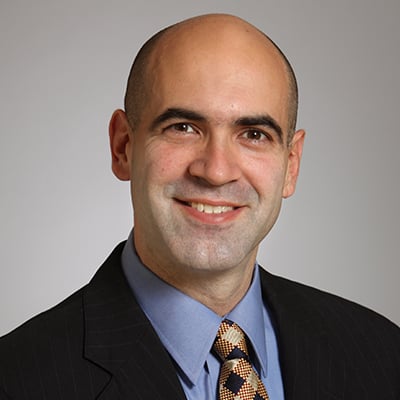Dealmakers of the Year
Richard Cieri: Calpine, Soultia Bankruptcies
While the collapse of Lehman Brothers Holdings Inc. and other banks dominated the headlines in 2008, a handful of long-running bankruptcies wrapped up last year that stand out even in the days of multibillion-dollar bailouts. Behind two of the largest emergences of 2008--those of Calpine Corporation and Solutia Inc.--was Richard Cieri.
Under any circumstances, ushering a company the size of Calpine through Chapter 11 is a daunting assignment. The California energy giant had assets of more than $27 billion and was $17 billion in debt when it filed for bankruptcy protection in December 2005. At the time, it was the sixth-largest Chapter 11 ever.
But Calpine's size turned out to be the least of the challenges facing Cieri. Calpine was the first major company to reorganize under Chapter 11 after the bankruptcy code was amended to give debtors just 18 months to file a reorganization plan and 210 days to cast off unwanted leases. The company's planned emergence coincided with the credit crunch, when the banks that typically fund companies' exits from bankruptcy were closing their vaults. And Cieri himself was shuttling constantly between his home in Cleveland and Calpine's filing venue in New York.
Within days of Calpine's filing, Cieri obtained a $2 billion debtor-in-possession loan to keep the company afloat as it reorganized. In March 2007 Cieri secured a further $5 billion for Calpine that included a crucial 'rollover' option to allow for the loan to be expanded later and used to finance the company's exit from bankruptcy. When the credit markets dried up months later, that provision helped Calpine avoid the fate of other companies that found themselves unable to find the emergence funds.
Credit problems nearly scuttled the reorganization of another of Cieri's biggest clients in 2008. Solutia, a chemical company, was just weeks away from its planned emergence from Chapter 11 in late 2007 when its lenders balked, saying that the volatile credit markets amounted to a material adverse change. Solutia sued the banks in February 2008, and along with Quinn Emanuel Urquhart Oliver & Hedges, Cieri negotiated a settlement that allowed the company to emerge from bankruptcy with $2 billion in exit funds.
'It was a year like I'd never seen,' says Cieri, who adds that 2009 is shaping up to be even busier. But at least he won't have to worry about his commute. In February, with his daughter now off at college, Cieri finally moved to an apartment just blocks from Kirkland's office in midtown Manhattan.
Joshua Korff: Clearwire Asset Acquisition
The everyday effect of most deals is hard to measure, but here's a prediction about the $14.5 billion merger of Clearwire Corporation and Sprint Nextel Corporation's WiMax businesses, which Joshua Korff, representing Clearwire, helped close in the toughest deal climate in memory: Americans will drink less coffee.
Here's how we figure it: WiMax, or highspeed broadband (also called 4G), allows wireless transmission of data over miles, a huge boost over current technology that limits wireless range to 100 feet or so from the transmission point. The deal combines the wireless businesses of the two companies, which had previously staked out mostly different corners of the U.S. market, into a new publicly traded company with the Clearwire name. It will take a few years, at least, before wireless broadband is in widespread use, but once the network is built out, it should free users from the tyranny of the coffee shop and allow urban users high-speed wireless access from almost anywhere.
This was no simple transaction. In addition to Clearwire and Sprint, five major technology companies, including Google Inc., Intel Corporation, and Cablevision Systems Corporation, agreed to invest $3.2 billion into the new venture in exchange for certain commercial licenses.
In addition, Korff played a key role in restructuring Clearwire's credit facility as the deal world fell apart. When the deal was announced in May, Clearwire already had a $1.2 billion credit facility with several lenders, mostly hedge funds. Under the terms of that credit, the deal required lender consent. Korff says Clearwire assumed that it would have to pay a bit higher interest rate and pledge more money to the lenders to keep the loan. But that was before the credit markets disintegrated. Negotiations stalled, he says, and then grew 'prickly' as the months progressed. Lenders were looking for Clearwire to put up as much as $300 million in additional capital.
Meanwhile, the five investing companies were applying pressure from the other side. The more Clearwire gave up, they felt, the less fiscally sound the new company would be. Korff's nifty bit of deal engineering was to help convince Sprint to pledge $200 million to subordinate Clearwire's loan. That allowed Clearwire to put up just $50 million more, and pay a slightly higher interest rate. The investors were mollified, and the lenders signed off just days before the deal was to close, in November.
With so many tech giants in its corner, WiMax could be the future. Starbucks, beware.
REPRINTED WITH PERMISSION FROM THE APRIL 2009 EDITION OF THE AMERICAN LAWYER © 2009 INCISIVE MEDIA. ALL RIGHTS RESERVED. FURTHER DUPLICATION WITHOUT PERMISSION IS PROHIBITED


